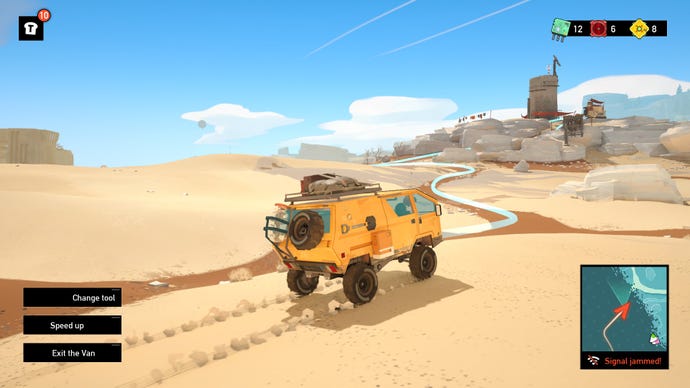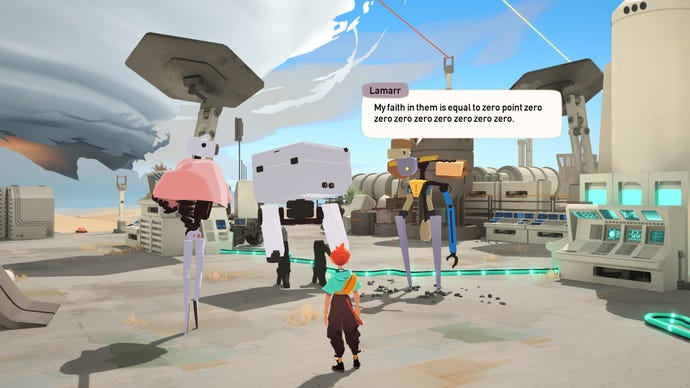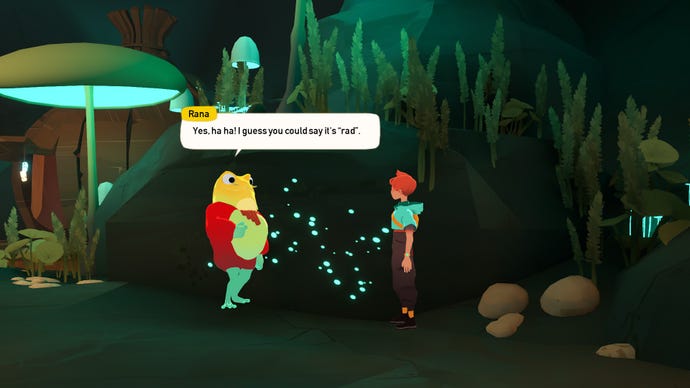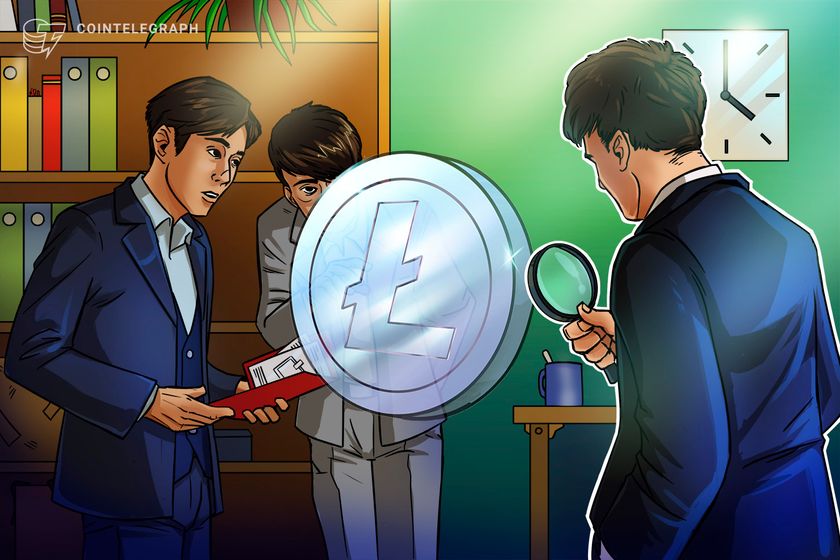Better check those desert dunes again Caravan SandWitch, someone’s buried the lede. An open world you can explore in a few relaxed evenings? One that favours the joyous freeform sightseeing of an Elden Ring or Breath Of The Wild; where you’ll scramble up vast industrial concrete ruins on scavenging missions for inquisitive frogs, instead of being nagged by bothersome checklists?
Ok, rain check on that last point. SandWitch can’t help but eventually funnel the freedom of ambling around in your chuffy yellow van into restrictive collect-a-thons. Still, for much of its breezy runtime, this one’s a real panacea for gaming’s more bloated map-scourers. Plus, even when you are sent off to hamster-cheek scavenged components before making progress, there’s very little in this world that doesn’t feel intentional. Sidequests and storytelling crumbs are deliberately scattered throughout, and each building is a thoughtful concrete puzzle box. It is, in brief, a nice time.
 Image credit: Plane Toast/Rock Paper Shotgun
Image credit: Plane Toast/Rock Paper Shotgun
You play as Sauge, a spacefarer returned to her planet of Cigalo after receiving a distress signal from her missing sister. Cigalo’s a cheery place, though economically and environmentally devastated after being exploited by an evil spacecorp named The Consortium. It’s populated by small settlements of people, some large talking frogs named the Reinetos, and the occasional friendly robot. Everything’s friendly, as it goes - even gravity itself. There’s no danger, no death, no damage from flinging yourself off the tallest building you can find. Just helping out your desert buds, upgrading your van with more gadgets to solve puzzles, or working on finding exactly where Sauge’s sister has go to.
While SandWitch is far too good-natured to frame it as a critique of anything, its world design certainly feels like it’s in a soft-parenting, “yes, and…” dialogue with what we might call the archetypal, stubborn map game. Case in point - the towers. There were hints, when Far Cry 3 started us down this whole dark path (then up it, then up it again), that is, its yellow-ragged ledge hopping would eventually evolve into something more playful. Reductively put, that’s still what you’re doing here: scaling structures to reveal more of a map. The difference being that each of these buildings genuinely feels like its own thing. Riffs on a formula, sure, but tasty ones.
 Image credit: Plane Toast/Rock Paper Shotgun
Image credit: Plane Toast/Rock Paper Shotgun
I’m having real difficulty trying to put into words why I enjoy these puzzles so much. They’re both very easy and very satisfying at the same time, which feels like witchcraft. They don’t demand any real lateral thinking, or any fiddly thumb-jiggery. All you really need to do is stay observant, and a little cognisant of the gadgets you’ve already unlocked with the van. Most of the early puzzles task you with reaching and deactivating a series of electronic jamming devices scattered across the map. You might have to activate a series of switches to open a path for your van to yank off a loose door with a grappling hook, giving you access to a ladder, for example. I like them a lot. I don’t always want my brain teased. Sometimes, it’s enough to have it tickled with a feather plucked from the extremely rare “very nice puzzle” chicken (Gallus gallus aenigma).
Also, why look a gift chicken in the mouth, eh? I’ve seen what’s inside those beaks, and it’s not pretty. Not like the views here. It’s irresponsible, almost: an environmental find-out-ocalypse so lovely to look at it might make you lax about averting global disaster. SandWitch’s world is one of dead and disused things made vibrant, and discarded things brought back to life. Dull concrete enlivened splashes of painterly weathering, a little reminiscent of a brighter Revacholian impressionism. Solar panels bend their necks graciously and hopefully toward the sky. Your van’s scanner sometimes reveals the vast tendrils of a mycelial network slithering happily below the ground, and the skyline hosts a smouldering uh-oh crowned in swirling, threatening clouds.
 Image credit: Plane Toast/Rock Paper Shotgun
Image credit: Plane Toast/Rock Paper Shotgun
Right, the checklists. In a concession made to funnel the freeform exploration into progress points that mark a new chapter, the game occasionally demands a pile of differently rarified components to upgrade your van with a new gadget. Components aren’t hard to come by. They’re everywhere in the world, and also doled out for sidequests. Still, I imagine everyone will hit a wall at some point, and be forced to do some actual scavenging. The numbers aren’t actually all that demanding, it’s just very noticeable suddenly being asked to play at the game’s pace rather than your own.
There’s also a bit of - not tension, perhaps, but incongruity - between the game’s stated mission as a cosy game about harmonious communities in a setting that’s also “an environment hostile to all civilizations due to over-exploitation.” Basically, the game’s reluctance to ever make you feel even slightly bad about anything means that its environmental parable comes across hollow. Your mates worry loudly about food supplies over a table bountiful with loafs and fruit. The evil Consortium are mentioned but never present - and thus issues feel presented but never explored beyond their hopeful aftermath. The problem with immaculate vibes, I guess, is that even creases are basically just an aesthetic choice.
 Image credit: Plane Toast/Rock Paper Shotgun
Image credit: Plane Toast/Rock Paper Shotgun
Still, there’s an undeniable air of gorgeous, faint melancholy that the game does lean into instead of trying to scrub out. I don’t want to spoil too much about the frogs, but learning about their place as the natives of the planet is a real highlight. The main thing I’d like to impart here, though (especially if you’re growing somewhat wary of self-conscious ‘cosyness’) is there’s some real thought and craft gone into how to create an experience that’s a genuinely relaxing, pleasant place to spend time, while still being nifty and satisfying as a mini-open world game. It is - a thousand words later - a nice time.
I took last week off work because I was thoroughly burnt out. Without the little space Caravan SandWitch gave me to escape to for a few evenings, I’m not sure I’d be back yet.
This review is based on a review build of the game provided by the publisher.

 1 month ago
12
1 month ago
12









 English (US) ·
English (US) ·